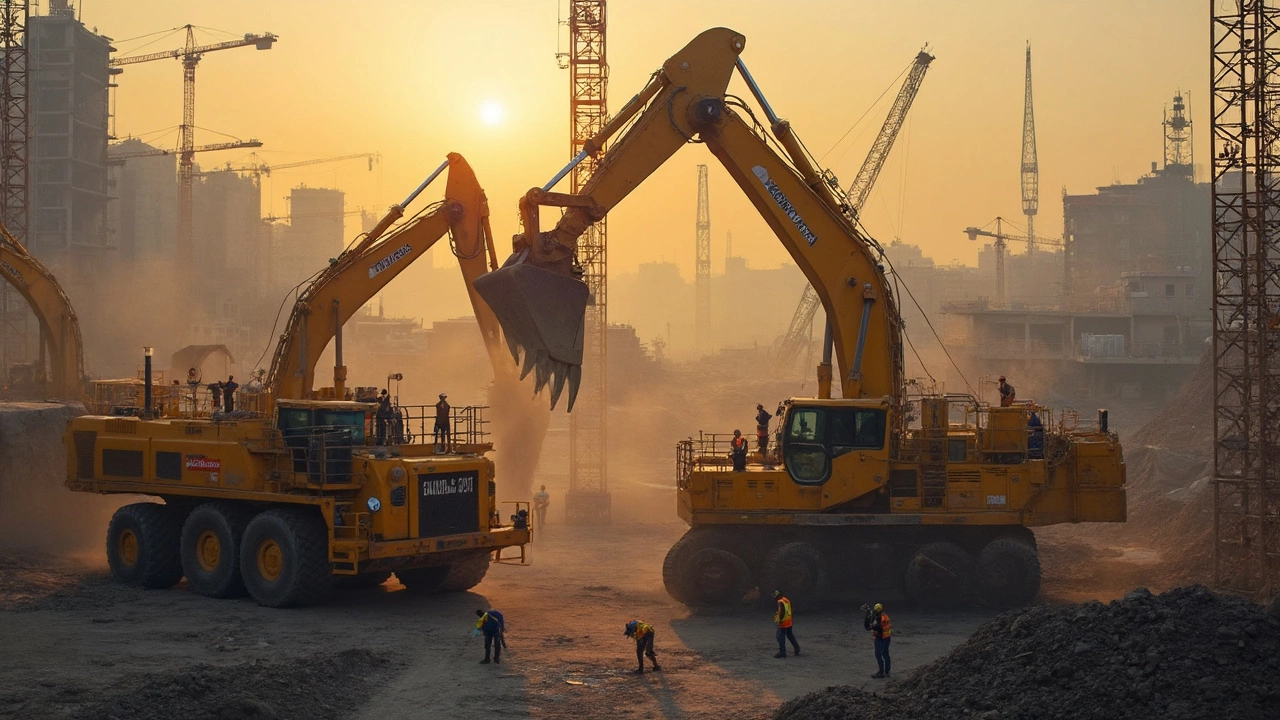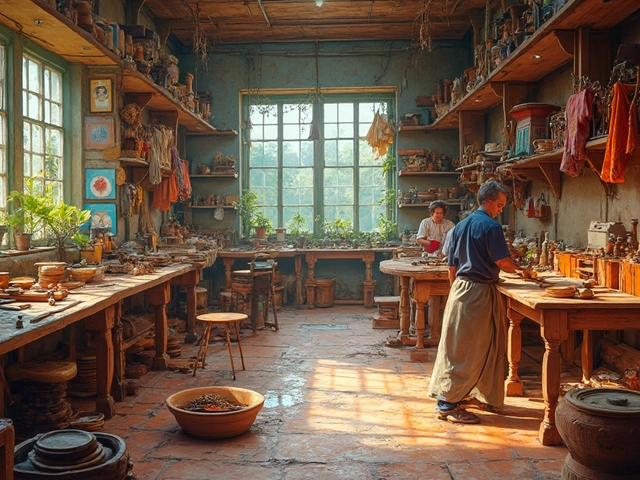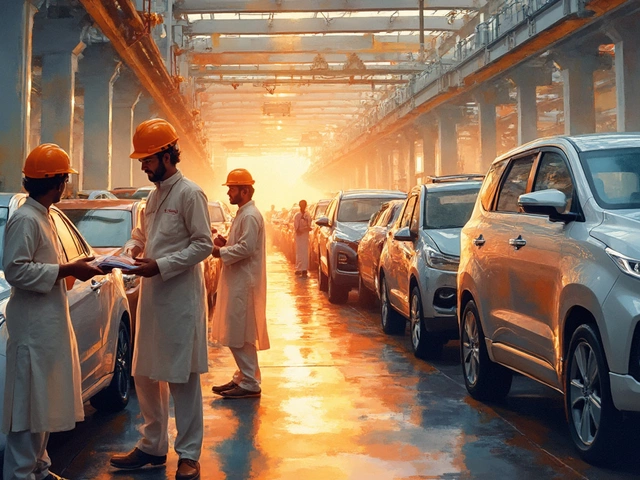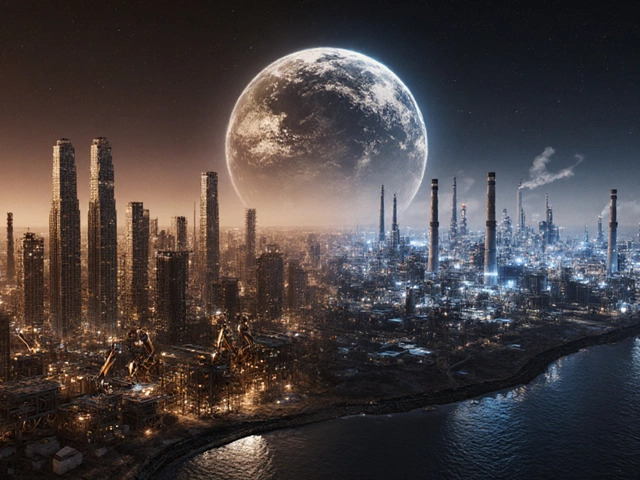Imagine a world without the rumble of huge earthmovers, massive cranes shifting steel, and hulking mining trucks ferrying tonnes of rock. Hard, right? Modern life leans so heavily on colossal machines that shape cities, carve tunnels, and move mountains. Ever wondered which company actually rolls out the biggest and baddest machinery on the planet? That’s far from a simple question—size, revenue, reach, innovation—they all play a part. But one name keeps popping up, and its impact is everywhere, whether you pass a construction site in Manchester or see a gold mine in Western Australia. Let’s get right into the world of giants.
The Reigning Giant: Caterpillar’s Story
Stack up the numbers, and you’ll very quickly spot Caterpillar at the very top of the machinery mountain. Their logo—the familiar yellow CAT—signals a global presence and a legacy of dominance. Founded way back in 1925, Caterpillar’s origin story is pure industrial grit: a merger between Holt Manufacturing and C.L. Best Track Tractor Co. Their early inventions, like the track-type tractor, changed global farming and construction forever. Today, Caterpillar is based in Illinois, USA, but their reach is basically everywhere heavy lifting happens.
Caterpillar isn’t just the biggest in terms of machines, but also in cold hard cash. Their machinery sales hit $59.4 billion in 2023, according to published annual reports. This dwarfs even their closest rivals. Whether it’s mining trucks towering higher than a two-story house or bulldozers that look like something out of Mad Max, Caterpillar’s machines are the go-to workhorses for the world’s toughest jobs. One cool fact: the CAT 797F mining truck weighs close to 687 tonnes when loaded, carrying loads bigger than a blue whale with room to spare.
The company’s ambition has always been huge, both literally and figuratively. They’ve never just stuck to construction—they spread out into mining, energy, transportation, and roadwork. Their product lineup covers over 400 different types of heavy machines. Not bad for a brand that started with a tractor nobody quite knew what to do with. As technology has raced forwards, Caterpillar has kept pace with things like automated diggers, remote-controlled dozers, and hybrid engines designed to save fuel and emissions. Their research budgets are enormous, funneled into teasing out every drop of efficiency from their machines. Simply put, Caterpillar doesn’t just build big machines—they build the ideas that keep them getting bigger and smarter.
Shareholders love the numbers, but operators love the reliability. Crews from Birmingham, UK, to Brazil often stick with CAT gear for one big reason—stuff just doesn’t break down. Mechanics tell stories about 30-year-old dozers still waking up with a growl after years of rough work. That consistency gives Caterpillar a backstage pass to projects where failure just isn’t an option: Olympics stadiums, mining booms, disasters zones after hurricanes and floods. There, that yellow paint always seems to show up first and leave last.
People sometimes think big machinery is about brute force—but with Caterpillar, it’s just as much about precision, safety, and efficiency. Their innovations in GPS-guided controls and fleet management let operators move more material using less fuel and with fewer mistakes. The company even pushed into digital services, with smart sensors and “Cat Connect” apps that track performance in real time. That blend of brute strength and brains is a tough combination to beat.
Rivals in the Race: Komatsu, Volvo, and XCMG
Sure, Caterpillar tops the charts, but they’re certainly not the only behemoth in the sandbox. Komatsu, a Japanese icon, proudly comes in as Caterpillar’s fiercest challenger. Founded in 1921—yes, older than CAT—Komatsu’s machines might wear a less flashy yellow-and-blue, but they’re everywhere you want to dig, load, or crush rock. Their annual revenue for 2023 tallied a hefty $25 billion. Not quite Caterpillar, but a figure any CEO would envy.
Komatsu’s edge comes from two things: unbelievable technology and an obsession with making their gear easy to maintain. Their automated haulage systems, for example, have revolutionised mining worldwide. In places like Pilbara, Australia, trucks the size of houses thunder around open-pit mines, guided by lasers and satellites—with not a human in sight. Komatsu also isn’t shy to push further into PC-controlled remote operation and AI-driven analysis, always looking for new tricks to boost productivity and keep humans safer. Their hybrid excavators save fuel and cut CO2 like something out of a futuristic movie. Operators like the little details too, like cabs that dampen rattles and keep drivers comfy—important when you’re stuck digging through January sleet or a July heatwave in Birmingham.
Next to Japan’s finest, you’ll find familiar European faces: Volvo Construction Equipment. Swedish engineering at its most practical, Volvo’s machines marry clean lines with a knack for squeezing more work from less power. They’re massive in Europe and well-known for leading the pack on eco-friendly construction gear. Electric wheel loaders and hybrids fill jobs across city projects and national parks—anywhere folks worry about pollution and noise. With sales sitting at $10 billion for 2023, Volvo’s not quite in the same league as CAT or Komatsu, but their progressive thinking keeps them ahead in niche markets.
And then there’s China’s XCMG—lately, the dark horse in this race. In fact, in 2022, XCMG leapfrogged into the number three global spot. Their massive cranes and road machinery are working on high-speed railways, super-high bridges, and mega-dams across Asia and Africa. XCMG made headlines for producing the world’s largest all-terrain crane, with a crazy-lift capacity of 4,000 tonnes. As China continues building big both at home and in its Belt and Road Initiative projects, you’re going to see that “XCMG” logo a lot more. In 2023, their revenues cruised past $11 billion.
There’s no doubt these three—Komatsu, Volvo, XCMG—keep Caterpillar’s engineers sweating. The companies borrow lessons from each other, copying best ideas and pushing boundaries. Sometimes the difference boils down to where you are: In the UK, you’ll spot CAT and Volvo at road projects, but out in Australia’s iron mines, Komatsu’s driverless trucks are the stars. In Ethiopia or Pakistan, don’t be surprised if an XCMG crane hoists up a bridge span.
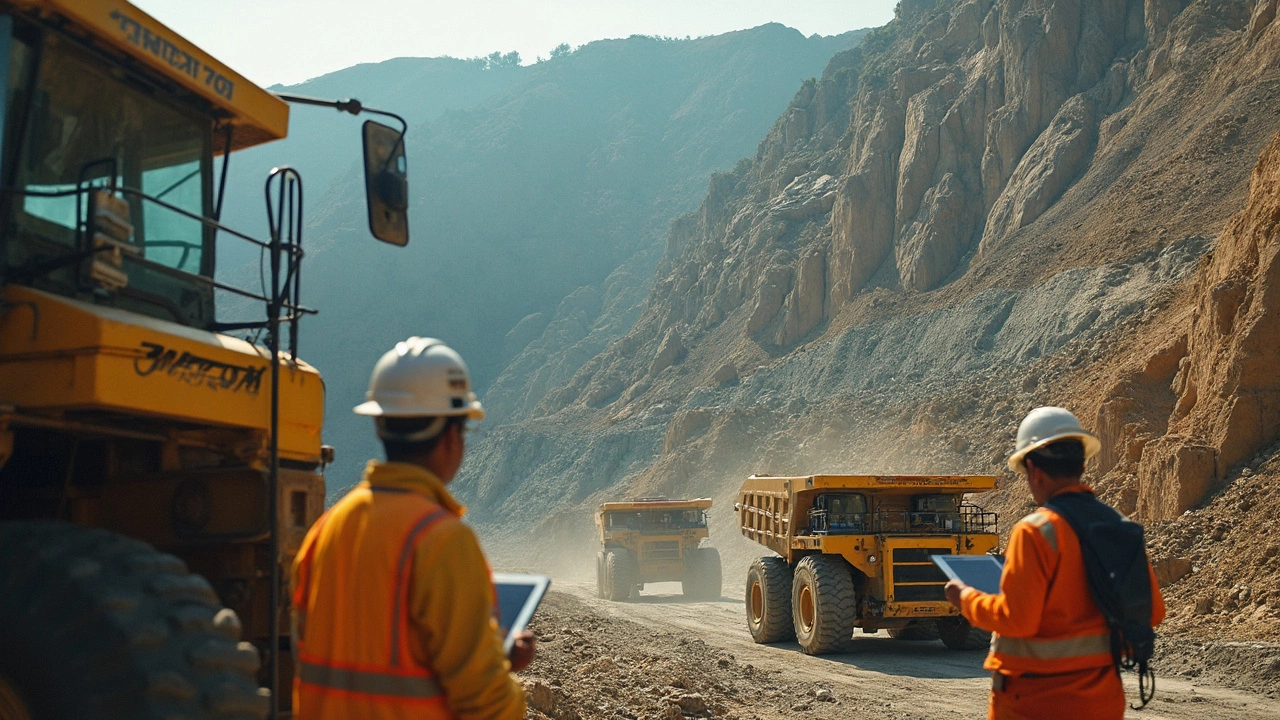
How Big is "Biggest"? Measuring Machinery Power
So, which company truly builds the world’s largest machines? That’s a surprisingly tricky one. If we’re talking about the length, width, or pure muscle, it actually depends on what you’re looking for. Let’s break it down—no pun intended—by different types of heavy machinery.
- Mining Trucks: The Caterpillar 797F leads the way here, with a payload capacity of 400 short tons—enough to move an entire neighbourhood’s worth of rubbish in one go. Komatsu’s answer is the 980E-4, barely smaller, but wider and fitted with clever software.
- Excavators: Hitachi might surprise you by producing the EX8000-6, one of the world’s biggest hydraulic excavators, at 811,000 pounds. Komatsu chimes in with the PC8000-6, also a beast.
- Cranes: XCMG’s XGC88000 can lift more than four A380s at once. In Europe, Liebherr’s crawler cranes—think the LR 13000—haul up everything from turbines to bridges in single lifts.
- Wheel Loaders: Caterpillar’s 994K scoops up to 47 cubic meters in one go. That’s huge—imagine an articulated loader so wide it takes up three lanes.
What about technology? GPS tracking, electric control, automated driving, and fuel savings matter as much as raw size these days. On that front, Komatsu’s self-driving haul trucks and Volvo’s all-electric loaders are right at the cutting edge. Caterpillar, meanwhile, has dumped hundreds of millions into making sure its machines talk to each other, sending updates back to project managers and operators via sleek dashboards. As one leading analyst from KHL magazine put it:
“The game has changed from just building bigger and bigger. Now, it’s about who delivers smarter, greener and safer machines at scale.”
That shift forces every brand into a tech-arms race as much as a size contest. Still, the biggest machinery manufacturer by revenue, global reach, and sheer product range remains that familiar name—Caterpillar—by a healthy margin.
Beyond the Machines: What Makes a Giant Manufacturer?
It’s tempting to think that the biggest machinery company is just the one with the biggest digger or the fattest cheque book, but it’s about much more. Reputation, reliability, and the network to deliver gear anywhere on Earth matter as much as horsepower. Caterpillar’s after-sales support is legendary—parts, repairs, upgrades, even training rolled out in 170 countries. Say you’re running a quarry outside Birmingham and a part snaps—it’s pretty much guaranteed CAT can get a spares van to you within a day. That kind of service keeps projects moving and businesses loyal.
Those big manufacturers also act as trend-setters. When Caterpillar invests big in emissions-cutting tech, you can guarantee regulations and customer expectations will chase the rest. Komatsu has forced the market to consider fully automated haul trucks—not just as a novelty, but real solutions, working dozens of sites. If Volvo bets hard on full electrification, city contracts follow. There’s a domino effect. Big names have an outsized influence not only on gear, but on how whole industries approach sustainability and site safety.
Supply chain? That’s another level of huge. Manufacturing the world’s heaviest and toughest machinery takes raw materials from all over, from Swedish steel to American electronics. A global slowdown anywhere—like the pandemic bottlenecks of 2020 and 2021—hits manufacturers at every link from design to delivery. The big players adapted with digital twins (basically super-detailed virtual copies of their machines) and predictive maintenance software that tells you a part will fail before it actually does. The future isn’t just more muscle, but more intelligence inside each hunk of steel.
Thinking about working with such huge machines, or maybe even buying one, opens a whole new can of practical questions. How do you transport something as tall as a house through crowded UK streets? There are companies, like Allelys, that specialize only in moving giant kit single lorry-load by single lorry-load, often closing roads for the night. Want to drive one? In the UK, you’ll need special licenses, like the CPCS or NPORS. Inspections are strict and safety rules even stricter—no space for shortcuts when hundreds of tonnes are moving about near busy sites.
So, next time you see a yellow bulldozer at work in Birmingham, remember—it might just have traveled from a factory half a world away, loaded with decades of innovation, and with a legacy stamped deep on its steel. In the machinery game, the “biggest” means brains, brawn, and the ability to keep running long after the project dust settles.
